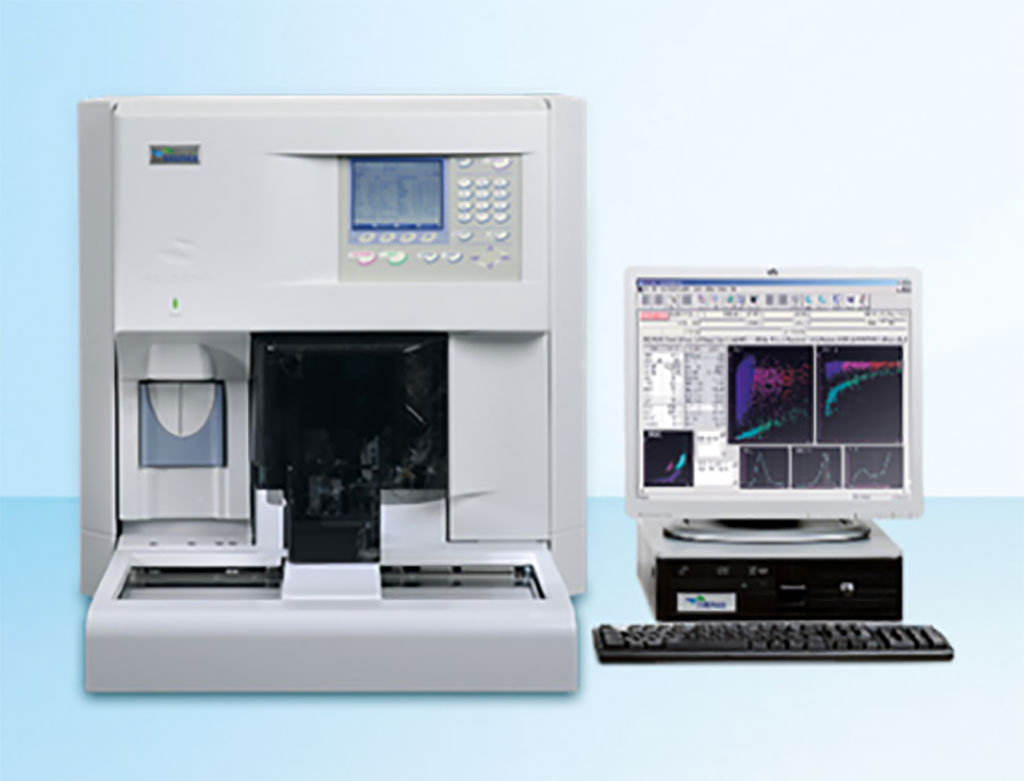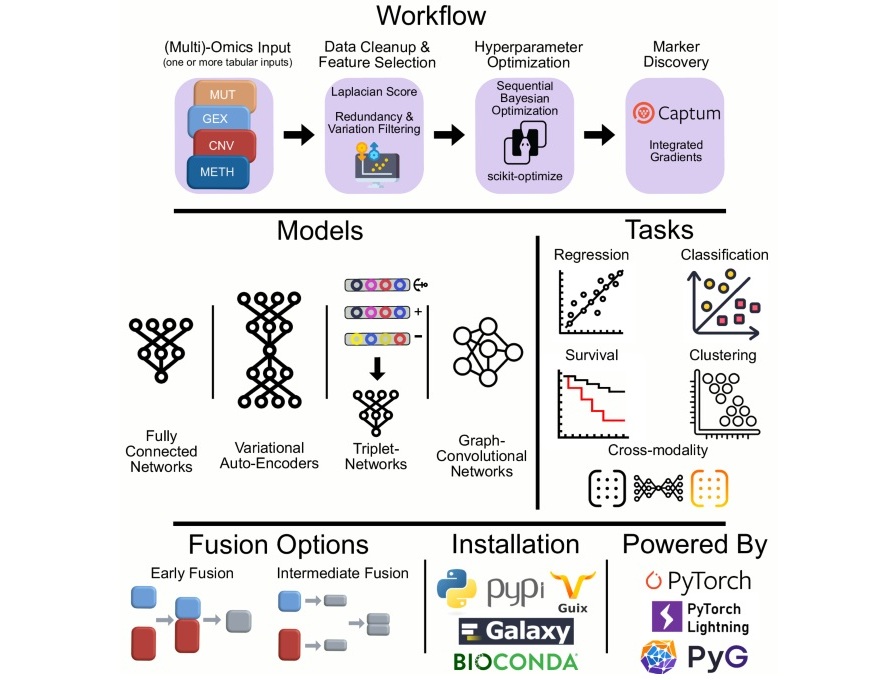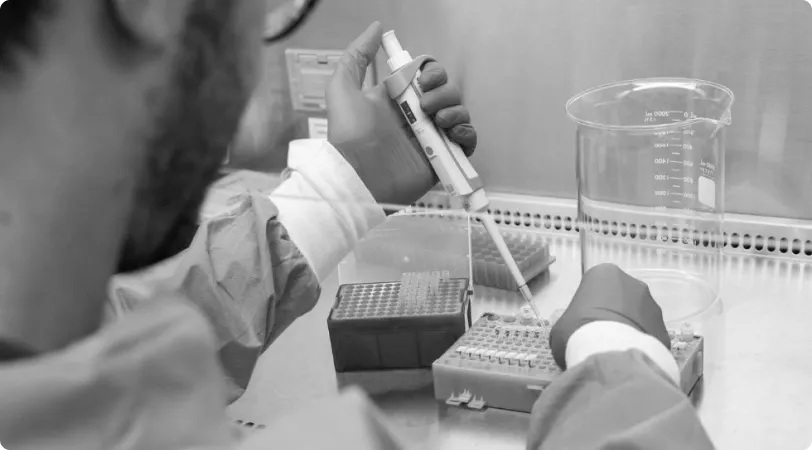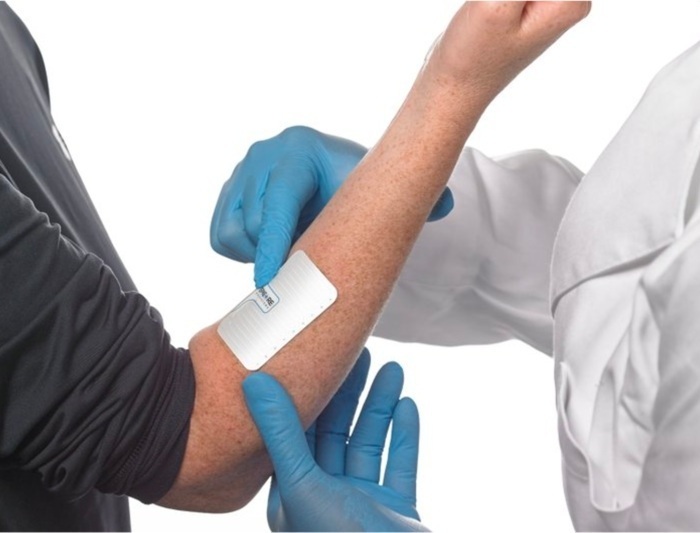Complete Blood Count Parameters Associated With Pancreatic Beta-Cell Function
|
By LabMedica International staff writers Posted on 19 May 2022 |

The pathophysiology of type 2 diabetes mellitus (T2DM) involves insulin resistance (IR) and progressive deterioration of beta-cell function (BCF). Estimation of IR and BCF is essential for screening subjects at a high risk of T2DM and making treatment plans in clinical practice.
Along with other routine tests, the complete blood count (CBC) is widely used by physicians in health checkups to determine the status of patients and healthy people. Advances in technology make it possible for automatic cell counters to measure hematologic parameters related to variations in the shape and size of cells in addition to quantitative blood cell measurements, which contribute to the diagnosis and monitoring of many diseases.
Medical Laboratorians at the Korea Association of Health Promotion (Seoul, Korea) analyzed data from health examinees that underwent health checkups at 16 health-promotion centers in 13 Korean cities during 2021. The subjects comprised 1,470 patients with normoglycemia, 1,124 with prediabetes, and 396 with diabetes.
CBC parameters including hemoglobin level, RBC indices, and white blood cell (WBC), and platelet counts were measured using the Sysmex XE-2100D analyzer (Sysmex Corporation, Kobe, Japan). Pancreatic beta-cell function (BCF) and insulin resistance (IR) were assessed using the homeostasis model assessment (HOMA)-β and HOMA-IR, respectively.
Biochemical measurements, including those of fasting serum glucose, triglycerides, high-density lipoprotein cholesterol, and creatinine were made using the Hitachi 7600 analyzer (Hitachi, Tokyo, Japan). HbA1c levels were measured using ion-exchange high-performance liquid chromatography using the HLC-723 G8 analyzer (Tosoh, Tokyo, Japan). Serum insulin was measured using an electrochemiluminescence immunoassay with the Cobas e801 (Roche Diagnostics, Mannheim, Germany).
The investigators reported that while HOMA-IR gradually increased according to red blood cell count quartiles (1.22, 1.40, 1.47, and 1.91, in the first, second, third, and fourth quartiles, respectively), there was no correlation after adjusting for waist circumference (WC) and HbA1c. The red blood cell distribution width (RDW) was associated with HOMA-β, but not with HOMA-IR. White blood cells (WBCs) were associated with HOMA-IR and HOMA-β, which was stronger in HOMA-β after adjusting for WC and HbA1c. The platelet count was correlated with HOMA-IR and HOMA-β, which only remained in HOMA-β, after adjusting for WC and HbA1c.
The authors concluded that RDW, WBC, and platelet counts were independently associated with HOMA-β in prediabetes and T2DM. This suggests that these CBC parameters could represent BCF in prediabetes and T2DM. Due to its cost-effectiveness and easy accessibility, these CBC parameters could be screened periodically in prediabetes and T2DM, along with HbA1c, to keep both physicians and patients aware of the BCF of these diseases. The study was published on May 13, 2022 in the Journal of Clinical Laboratory Analysis.
Related Links:
Korea Association of Health Promotion
Sysmex Corporation
Hitachi
Tosoh
Roche Diagnostics
Latest Clinical Chem. News
- Gold Nanoparticles to Improve Accuracy of Ovarian Cancer Diagnosis
- Simultaneous Cell Isolation Technology Improves Cancer Diagnostic Accuracy
- Simple Non-Invasive Hair-Based Test Could Speed ALS Diagnosis
- Paper Strip Saliva Test Detects Elevated Uric Acid Levels Without Blood Draws
- Prostate Cancer Markers Based on Chemical Make-Up of Calcifications to Speed Up Detection
- Breath Test Could Help Detect Blood Cancers
- ML-Powered Gas Sensors to Detect Pathogens and AMR at POC
- Saliva-Based Cancer Detection Technology Eliminates Need for Complex Sample Preparation
- Skin Swabs Could Detect Parkinson’s Years Before Symptoms Appear
- New Clinical Chemistry Analyzer Designed to Meet Growing Demands of Modern Labs

- New Reference Measurement Procedure Standardizes Nucleic Acid Amplification Test Results
- Pen-Like Tool Quickly and Non-Invasively Detects Opioids from Skin
- Simple Urine Test Could Detect Multiple Cancers at Early Stage
- Earwax Test Accurately Detects Parkinson’s by Identifying Odor Molecules
- First-Of-Its-Kind Quantitative Method Assesses Opioid Exposure in Newborns
- Paper-Based Devices Outperform Existing Methods in Diagnosing Asymptomatic Malaria
Channels
Clinical Chemistry
view channel
Gold Nanoparticles to Improve Accuracy of Ovarian Cancer Diagnosis
Ovarian cancer is considered one of the deadliest cancers, in part because it rarely shows clear symptoms in its early stages, and diagnosis is often complex. Current approaches make it difficult to accurately... Read more
Simultaneous Cell Isolation Technology Improves Cancer Diagnostic Accuracy
Accurate cancer diagnosis remains a challenge, as liquid biopsy techniques often fail to capture the complexity of tumor biology. Traditional systems for isolating circulating tumor cells (CTCs) vary in... Read moreMolecular Diagnostics
view channel
Blood Test Could Detect Proteins Linked to Alzheimer's Disease and Memory Loss
Alzheimer’s disease has long been associated with sticky amyloid plaques in the brain, but these markers alone do not fully explain the memory loss and cognitive decline patients experience.... Read more
Brain Inflammation Biomarker Detects Alzheimer’s Years Before Symptoms Appear
Alzheimer’s disease affects millions globally, but patients are often diagnosed only after memory loss and other symptoms appear, when brain damage is already extensive. Detecting the disease much earlier... Read more
First-of-Its-Kind Blood Test Detects Over 50 Cancer Types
Many cancers lack routine screening, so patients are often diagnosed only after tumors grow and spread, when options are limited. A faster, less invasive approach that broadens early detection could shift... Read more
Routine Blood Draws Could Detect Epigenetic Biomarkers for Predicting Cardiovascular Disease Risk
Cardiovascular disease is a leading cause of death worldwide, yet predicting individual risk remains a persistent challenge. Traditional risk factors, while useful, do not fully capture biological changes... Read moreImmunology
view channel
Novel Tool Uses Deep Learning for Precision Cancer Therapy
Nearly 50 new cancer therapies are approved each year, but selecting the right one for patients with highly individual tumor characteristics remains a major challenge. Physicians struggle to navigate the... Read more
Companion Diagnostic Test Identifies HER2-Ultralow Breast Cancer and Biliary Tract Cancer Patients
Breast cancer is the most common cancer in Europe, with more than 564,000 new cases and 145,000 deaths annually. Metastatic breast cancer is rising in younger populations and remains the leading cause... Read moreMicrobiology
view channel
Microfluidic Platform Assesses Neutrophil Function in Sepsis Patients
Sepsis arises from infection and immune dysregulation, with neutrophils playing a central role in its progression. However, current clinical tools are unable to both isolate these cells and assess their... Read moreNew Diagnostic Method Confirms Sepsis Infections Earlier
Sepsis remains one of the most dangerous medical emergencies, often progressing rapidly and becoming fatal without timely intervention. Each hour of delayed treatment in septic shock reduces patient survival... Read more
New Markers Could Predict Risk of Severe Chlamydia Infection
Chlamydia trachomatis is a common sexually transmitted infection that can cause pelvic inflammatory disease, infertility, and other reproductive complications when it spreads to the upper genital tract.... Read more
Portable Spectroscopy Rapidly and Noninvasively Detects Bacterial Species in Vaginal Fluid
Vaginal health depends on maintaining a balanced microbiome, particularly certain Lactobacillus species. Disruption of this balance, known as dysbiosis, can increase risks of infection, pregnancy complications,... Read morePathology
view channelAccurate Pathological Analysis Improves Treatment Outcomes for Adult Fibrosarcoma
Adult fibrosarcoma is a rare and highly aggressive malignancy that develops in connective tissue and often affects the limbs, trunk, or head and neck region. Diagnosis is complex because tumors can mimic... Read more
Clinicopathologic Study Supports Exclusion of Cervical Serous Carcinoma from WHO Classification
High-grade serous carcinoma is a rare diagnosis in cervical biopsies and can be difficult to distinguish from other tumor types. Cervical serous carcinoma is no longer recognized as a primary cervical... Read moreTechnology
view channel
Coral-Inspired Capsule Samples Hidden Bacteria from Small Intestine
The gut microbiome has been linked to conditions ranging from immune disorders to mental health, yet conventional stool tests often fail to capture bacterial populations in the small intestine.... Read more
Rapid Diagnostic Technology Utilizes Breath Samples to Detect Lower Respiratory Tract Infections
Respiratory tract infections (LRTIs) are leading causes of illness and death worldwide, particularly among vulnerable populations such as the elderly, young children, and those with compromised immune systems.... Read moreIndustry
view channel
VedaBio Partners With Mammoth Biosciences to Expand CRISPR-Based Diagnostic Technologies
VedaBio (San Diego, CA, USA) has entered into a non-exclusive license agreement with Mammoth Biosciences (Brisbane, CA, USA) for the use of select CRISPR-based technologies in diagnostic applications.... Read more




















